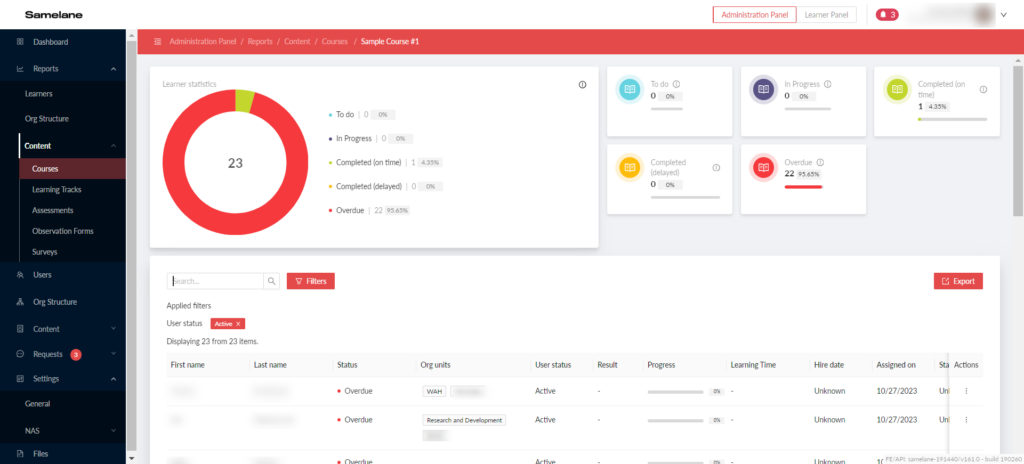In the rapidly evolving landscape of e-learning, creating inclusive learning environments is not just a best practice – it’s a necessity. Accessibility in education ensures that all learners, regardless of their abilities or disabilities, have equal access to learning opportunities. As an LMS provider, we recognize the significance of this commitment and have integrated a variety of accessibility features to support all learners effectively.
The Importance of Accessibility in E-Learning
Inclusive learning environments and accessibility in e-learning are essential for several reasons:
- Equity in Education: Every learner deserves the opportunity to engage with educational content. By prioritizing accessibility, we help eliminate barriers that prevent participation, ensuring that everyone has a fair chance to succeed.
- Diverse Learning Needs: Learners come from diverse backgrounds and possess different abilities. An accessible LMS accommodates various learning styles, making it easier for all students to engage with materials in ways that work for them.
- Legal Compliance: Many educational institutions are bound by regulations requiring accessibility, such as the Americans with Disabilities Act (ADA). Compliance is not just a legal obligation but a moral one that reflects a commitment to inclusivity.
- Enhanced Learning Outcomes: Accessible learning environments lead to better educational outcomes. When students can access materials in a way that meets their needs, they are more likely to succeed and remain engaged.
Accessibility Features in Our LMS
To support inclusive learning environments, our LMS offers a range of accessibility features designed to enhance the user experience for all learners:
1. Screen Reader Compatibility
Our platform is fully compatible with screen readers, enabling visually impaired learners to access course content seamlessly. By ensuring that all text is properly tagged and structured, we facilitate a smooth navigation experience.
2. Keyboard Navigation
For learners who cannot use a mouse, our LMS supports complete keyboard navigation. This feature allows users to access all functionalities using keyboard shortcuts, making it easier for those with physical disabilities to interact with the platform.
3. Customizable Display Options
We understand that visual preferences vary among learners. Samelane LMS allows users to adjust text size, color contrast, and background colors to create a personalized reading experience that enhances readability for individuals with visual impairments.

4. Multimedia Accessibility
To support learners with hearing impairments, we provide captions and transcripts for all video and audio content. This ensures that everyone can engage with the material, regardless of their preferred learning modality.
5. Clear and Intuitive Navigation
Our LMS is designed with user-friendly navigation in mind. A well-structured interface helps all users, especially those with cognitive disabilities, easily find their way through courses and resources.

6. Alternative Text for Images
All images used in course materials include descriptive alternative text. This feature helps learners who use screen readers to understand visual content and ensures that everyone can grasp the full context of the material.
7. Training Resources for Instructors
We provide comprehensive training for instructors on creating accessible content. This empowers educators to design courses that are inclusive from the start, ensuring that all learners benefit from accessible materials.
How to Use Your LMS to Create Equitable & Accessible Online Learning Environments
Creating equitable and accessible online learning environments requires intentional strategies that leverage the full capabilities of your LMS. First, start creating inclusive learning environments by ensuring that all course materials are designed with inclusivity in mind. This means using a variety of content formats: text, video, audio, and interactive elements—to cater to different learning preferences. Utilize the LMS’s built-in accessibility features, such as customizable display options, to allow students to adjust text size and contrast according to their needs.
Additionally, promote active engagement by incorporating collaborative tools like discussion forums and group projects, which can foster a sense of community among learners. Use analytics and reporting features in your LMS to monitor engagement levels and identify learners who may be struggling, enabling targeted support for those who need it most. Furthermore, offer training sessions for both educators and students on how to use the LMS effectively, ensuring everyone knows how to access resources and navigate the platform.
Lastly, create a feedback loop by encouraging students to share their experiences with accessibility and inclusivity within the LMS. This continuous feedback will not only inform improvements but also empower learners by giving them a voice in their educational experience. By employing these strategies, you can effectively use your LMS to cultivate an environment that prioritizes equity and accessibility, ensuring that all learners have the opportunity to thrive.
Inclusive Learning Environments: A Conclusion
Creating inclusive learning environments is a shared responsibility that requires commitment from both LMS providers and educators. By prioritizing accessibility, we empower all learners to engage fully with their education, fostering a culture of inclusivity and support.
Samelane LMS is designed to break down barriers and provide every learner with the tools they need to succeed. Together, we can create a more equitable educational landscape that celebrates diversity and promotes success for all. If you want to test the platform for your employees, just book a free demo now!










